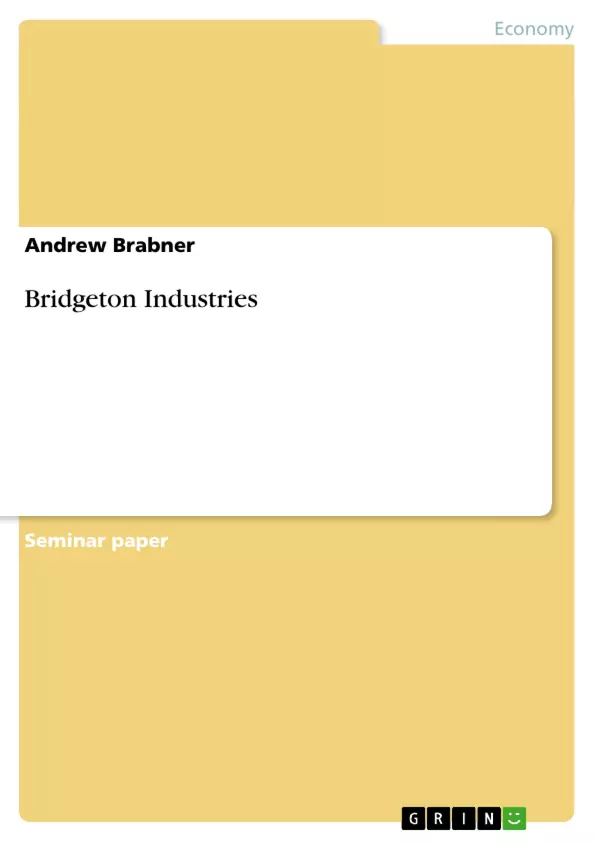Please note that Exhibit II of my chosen case study, Bridgeton Industries, has a few mistakes in the sub totals and therefore also in the total factory profit. I have corrected these in Attachment I and will therefore proceed to assess this case using my attachment and not Exhibit II.
The aim of this writing is to evaluate whether or not manifolds should be outsourced and to identify the reasons for sustained unprofitably at the Bridgeton Industries automotive component and fabrication plant despite improvements in the effectiveness and efficiency of production processes.
To resolve this problem I will first look at current and future profitability of the individual product lines and then examine the method of overhead cost allocation and the way in which costs are captured. I will then create an estimated model year 1990/1991 in order to evaluate the effect that the outsourcing of manifold production will have on the remaining plant operations and therefore also upon overall plant profitability. To close I will make suggestions as to what could / should be changed in order to improve transparency for future decision-making.
Inhaltsverzeichnis (Table of Contents)
- Introduction
- Product line profitability
- Table 1: Gross Margin % of Sales
- Table 2: Net result as % of sales
- Table 3: Allocated Overhead as % of sales
- Overhead Cost Allocation
- Table 4: Profitability, Overhead Costs and Overhead Allocation Rates
Zielsetzung und Themenschwerpunkte (Objectives and Key Themes)
This report aims to evaluate the decision to outsource manifold production at Bridgeton Industries and to analyze the reasons for sustained unprofitability at the automotive component and fabrication plant, despite improvements in production efficiency.
- Product line profitability and its evolution over time
- The impact of overhead cost allocation on product line profitability
- The effects of outsourcing on overall plant profitability
- The role of cost drivers in overhead allocation
- The need for improved transparency in decision-making
Zusammenfassung der Kapitel (Chapter Summaries)
The report begins by examining the profitability of each product line over several model years. It highlights the varying profitability of the different products, particularly the declining profitability of the Muffler/Exhausts and Oil Pan product lines. The analysis then investigates the impact of overhead cost allocation on product profitability, revealing that the allocation method may be distorting the profitability picture.
The report further explores the consequences of outsourcing, focusing on how it has affected both overall company profitability and the profitability of individual product lines. The analysis suggests that outsourcing has improved the company's product mix but has reduced overall bottom-line profitability due to the removal of contributing products and increased overhead allocation burden on remaining products.
Schlüsselwörter (Keywords)
The key terms and concepts discussed in this report include product line profitability, overhead cost allocation, outsourcing, cost drivers, and decision-making transparency. The report utilizes real-world data from Bridgeton Industries to explore these concepts and their impact on the company's overall performance.
- Quote paper
- Andrew Brabner (Author), 2002, Bridgeton Industries, Munich, GRIN Verlag, https://www.grin.com/document/7646



